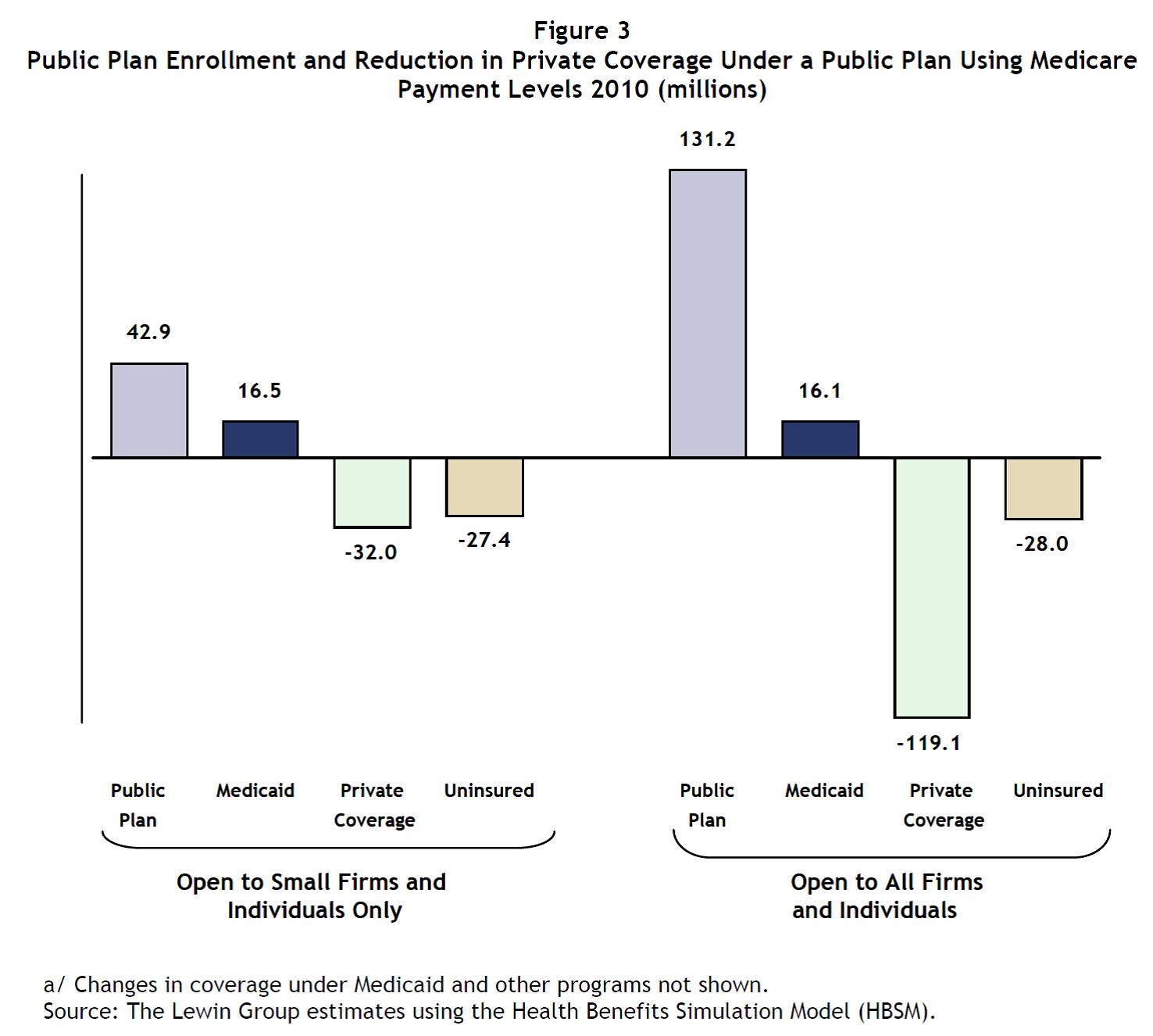This Chart Explains How Democrats Will Take Away Your Current Coverage
This week, Democratic presidential candidates will gather in Miami for their first debates of the 2020 campaign cycle. Health care, including Sen. Bernie Sanders’ single-payer scheme, will surely serve as a prime point of contention.
More candidates who want to appear more moderate, such as former vice president Joe Biden, might try to contrast themselves with Vermont’s socialist senator. Because Biden and others instead want to allow people to buy into the Medicare program—the so-called “public option”—they will claim that individuals who like their current health coverage need not fear losing it.
In an April 2009 study, Lewin concluded that within one short year, a government-run health plan would eliminate the private coverage of 119.1 million individuals—two-thirds of those with employer-provided insurance:

Democrats’ proposals for a government-run health plan have slightly different details, but they share several characteristics that explain this massive erosion of private health coverage. First, most of the plans receive dollars from the Treasury—seed funding, funding for reserves, or both. These billions of taxpayer dollars, to say nothing of the possibility of additional bailout funds should it into financial distress, would give a government-run plan an inherent advantage over private insurers.
Third, and most importantly, the government-run plan would pay doctors and hospitals at or near Medicare payment levels. These payment levels fall far short of what private health plans pay medical providers, and in most cases fall short of the actual cost of care.
The Lewin Group concluded in 2009 that, by paying doctors and hospitals at Medicare rates, a government-run plan would lead to massive disruption in the employer-provided insurance market. It also concluded that the migration to the government plan would cost hospitals an estimated $36 billion in revenue, and doctors an estimated $33.1 billion. As Lewin noted, under this scenario “health care providers are providing more care for more people with less revenue”—a recipe for a rapid exodus of doctors out of the profession.
Democrats have spent the past two years criticizing President Trump for his supposed “sabotage” of Obamacare. But proposals to create a government-run health plan would sabotage private health insurance, to drive everyone into a single-payer system over time. And some of the plan’s biggest proponents have said as much publicly.
Many moderate and establishment Democrats view the government-run plan as a more appealing method to reach their single-payer goal, because it would take away individuals’ private coverage more gradually. Few believe in the efficiency of competition, or the private sector, as a policy matter; instead, they view the millions of people with private health coverage as a political obstacle, one they can overcome over time.
Senator and presidential candidate Kirsten Gillibrand (D-N.Y.) epitomizes this belief. In March, she called for “a not-for-profit public option [to] compete for the business—I think over a couple years you’re going to transition into single payer.” Of course, by making these comments, Gillibrand indicated a clear bias toward her preferred outcome. So when she said “I don’t think that [private insurers] will compete,” Gillibrand really meant that she—and her Democratic colleagues—will sabotage them so badly that they cannot.
Democrats may claim that they don’t want to take away individuals’ insurance, but the numbers from the Lewin Group survey don’t lie. Regardless of whether they support Sanders’ bill or not, the health coverage of more than 100 million Americans remains at risk in the presidential election.
This post was originally published at The Federalist.